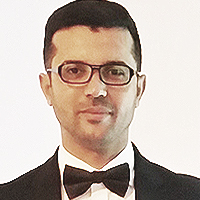Abstract
Research Article
Parathyroid Functions in Thalassemia Major Patients
Ayfer Gözü Pirinççioğlu*, Deniz Gökalp and Murat Söker
Published: 29 August, 2017 | Volume 1 - Issue 1 | Pages: 015-019
Background: Hypoparathyroidism is well known to occur in thalassemia major patients, but it is thought to be uncommon and its incidence is considered to be decreasing with improvements in chelation therapy. The objective of this study was to assess the prevalence of parathyroid dysfunction in the first decade of life of the patients with thalassemia major.
Patients and Methods: Ninety children with beta-thalassemia major (55 males and 35 females) with a mean age of 7.17±3.78 years (1-13 years) and age and sex matched control group of 60 healthy children (36 males and 24 females) with a mean age 6.98±3.66 years (1-13) years. Serum parathyroid hormone (PTH), serum total Calcium (Ca), serum phosphorus (P), serum alkaline phosphatase (ALP), serum 25-hydroxyvitamin D (25-OHD) and serum ferritin levels were measured.
Result: PTH levels were higher than normal range in 23 (25.6%) patients with a mean value of 75.2±31.3 µg/mL compared to those having normal range level (35.3±15.2 µg/mL). Ca levels were found low in 11 patients (12.2%), and P levels were found high in 2 (2.22%) and low in 4 (4.44%) patients while high ALP levels were found in 6 (6.67%) patients. 25-OHD levels were low in all patients with a mean value of 24.95±5.82.
Conclusion: Reports in the literature indicate that parathyroid dysfunction due to iron overload generally occurs in 2nd or 3rd decade of patients with thalassemia major. However, our study shows that PTH due to iron overload may develop in a significant number of thalassemia major patients, therefore, all thalassemics should be carefully watched for endocrine organ function such as hyperparathyroidism might occur even in the first decade of the patients with thalassemia major.
Read Full Article HTML DOI: 10.29328/journal.hcem.1001003 Cite this Article Read Full Article PDF
Keywords:
Beta-thalassemia major; Secondary hyperparathyroidism; Parathyroid dysfunction
References
- Cooley TB, Lee P. A series of cases of splenomegaly in children with anemia and peculiar changes. Trans Am Pediatr Soc. 1925; 37: 29-30.
- Saka N, Sukur M, Bundak R, Anak S, Neyzi O, et al. Growth and puberty in thalassemia major. J Pediatr Endocrinol Metab. 1995; 8: 181-186. Ref.: https://goo.gl/CfD5Da
- Modell B, Letsky EA, Flynn DM, Peto R, Weatherall DJ. Survival and desferrioxamine in thalassemia major. BMJ. 1982; 284: 1081-1084. Ref.: https://goo.gl/c1pWcH
- Al-Elq AH, Al-Seed HH. Endocrinopathies in patients with thalassemias. Saudi Med J. 2004; 25: 1347-1351. Ref: https://goo.gl/F2LtF
- Vullo C, De Sanctis V, Katz M, Wonke B, Hoffbrand AV, et al. Endocrine abnormalities in thalassemia. Ann NY Acad Sci. 1990; 612: 293-310. Ref: https://goo.gl/2PgmVY
- Pirinccioglu AG, Akpolat V, Gökalp D, Koksal O, Haspolat K, et al. Bone mineral density in children with beta-thalassemia major in Diyarbakir. Bone. 2011; 49: 819-823. Ref: https://goo.gl/b7VXj5
- Pirinccioglu AG, Deniz T, Gokalp D, Beyazit N, Haspolat K, et al. Assessment of Thyroid Function in Children Aged 1-13 Years with Beta-Thalassemia Major. Iranian J Pediatr. 2011; 21: 77-82. Ref: https://goo.gl/y3pJp4
- Perignon F, Brauner R, Souberbielle JC, de-Montalembert M, Girot R. Growth and endocrine function in major thalassemia. Arch Fr Pediatr. 1993; 50: 657-663. Ref: https://goo.gl/ezSvnZ
- Multicenter study of prevalence of endocrine complications in thalassaemia major. Italian Working Group On Endocrine Complications in Non-Endocrine Diseases. Clin Endocrinol (Oxf). 1994; 42: 581-586. Ref: https://goo.gl/hWWf9D
- Güler E, Patıroğlu T, Çaksen H, Özdemir MA, Kurtoğlu S, et al. Talasemi Majörlü Vakalarda Endokrin Komplikasyonların Değerlendirilmesi. Turkish. 199; 34: 174-781. Ref: https://goo.gl/jbXcZM
- Risdon RA, Flynn DM, Barry M. The relation between liver iron concentration and liver damage in transfusional iron overload in thalassaemia and the effect of chelation therapy. Gut 1973; 14: 421. Ref: https://goo.gl/8nq4JW
- Hershko C, Weatherall DJ. Iron-chelating therapy. Crit Rev Clin Lab Sci 1988; 26: 303-345. Ref: https://goo.gl/hoqTCH
- Hershko C, Konijn AM, Link G. Iron chelators for thalassaemia. Br J Haematol 1998; 101: 399-406. https://goo.gl/ySg6hS
- De Vernejoul MC, Girot K, Gueris J, Cancela L, Bang S,et al. Calcium phosphate metabolism and bone disease in patients with homozygous thalassaemia. J Clin Endocrinol Metab.1982; 54: 276-281. Ref: https://goo.gl/o2ae6d
- Peacey SR, Routine biochemistry in suspected vitamin D deficiency. J R Soc Med. 2004; 97: 322-325. Ref: https://goo.gl/xLjUeY
- Gutteridge JM, Halliwell B. Iron toxicity and oxygen radicals. In: Hershko C, editor. Iron chelating therapy. London: Baillière Tindall, 1989; 2: 195-256. Ref: https://goo.gl/h7fbJN
- Iancu T. Ultrastructural pathology of iron overload with special reference to endocrine glands. In: Pintor C, Corda R, De-Sanctis V, editors. Workshop on endocrine problems in thalassemia. Venezia: San Marco Scientific Publications. 1990: 19-28.
Similar Articles
-
Parathyroid Functions in Thalassemia Major PatientsAyfer Gözü Pirinççioğlu*,Deniz Gökalp,Murat Söker. Parathyroid Functions in Thalassemia Major Patients. . 2017 doi: 10.29328/journal.hcem.1001003; 1: 015-019
Recently Viewed
-
Adult Neurogenesis: A Review of Current Perspectives and Implications for Neuroscience ResearchAlex, Gideon S*,Olanrewaju Oluwaseun Oke,Joy Wilberforce Ekokojde,Tolulope Judah Gbayisomore,Martina C. Anene-Ogbe,Farounbi Glory,Joshua Ayodele Yusuf. Adult Neurogenesis: A Review of Current Perspectives and Implications for Neuroscience Research. J Neurosci Neurol Disord. 2024: doi: 10.29328/journal.jnnd.1001102; 8: 106-114
-
Late discover of a traumatic cardiac injury: Case reportBenlafqih C,Bouhdadi H*,Bakkali A,Rhissassi J,Sayah R,Laaroussi M. Late discover of a traumatic cardiac injury: Case report. J Cardiol Cardiovasc Med. 2019: doi: 10.29328/journal.jccm.1001048; 4: 100-102
-
A two-phase sonographic study among women with infertility who first had normal sonographic findingsKalu Ochie*,Abraham John C. A two-phase sonographic study among women with infertility who first had normal sonographic findings. Clin J Obstet Gynecol. 2022: doi: 10.29328/journal.cjog.1001117; 5: 101-103
-
Sinonasal Myxoma Extending into the Orbit in a 4-Year Old: A Case PresentationJulian A Purrinos*, Ramzi Younis. Sinonasal Myxoma Extending into the Orbit in a 4-Year Old: A Case Presentation. Arch Case Rep. 2024: doi: 10.29328/journal.acr.1001099; 8: 075-077
-
Analysis of Psychological and Physiological Responses to Snoezelen Multisensory StimulationLucia Ludvigh Cintulova,Jerzy Rottermund,Zuzana Budayova. Analysis of Psychological and Physiological Responses to Snoezelen Multisensory Stimulation. J Neurosci Neurol Disord. 2024: doi: 10.29328/journal.jnnd.1001103; 8: 115-125
Most Viewed
-
Evaluation of Biostimulants Based on Recovered Protein Hydrolysates from Animal By-products as Plant Growth EnhancersH Pérez-Aguilar*, M Lacruz-Asaro, F Arán-Ais. Evaluation of Biostimulants Based on Recovered Protein Hydrolysates from Animal By-products as Plant Growth Enhancers. J Plant Sci Phytopathol. 2023 doi: 10.29328/journal.jpsp.1001104; 7: 042-047
-
Sinonasal Myxoma Extending into the Orbit in a 4-Year Old: A Case PresentationJulian A Purrinos*, Ramzi Younis. Sinonasal Myxoma Extending into the Orbit in a 4-Year Old: A Case Presentation. Arch Case Rep. 2024 doi: 10.29328/journal.acr.1001099; 8: 075-077
-
Feasibility study of magnetic sensing for detecting single-neuron action potentialsDenis Tonini,Kai Wu,Renata Saha,Jian-Ping Wang*. Feasibility study of magnetic sensing for detecting single-neuron action potentials. Ann Biomed Sci Eng. 2022 doi: 10.29328/journal.abse.1001018; 6: 019-029
-
Pediatric Dysgerminoma: Unveiling a Rare Ovarian TumorFaten Limaiem*, Khalil Saffar, Ahmed Halouani. Pediatric Dysgerminoma: Unveiling a Rare Ovarian Tumor. Arch Case Rep. 2024 doi: 10.29328/journal.acr.1001087; 8: 010-013
-
Physical activity can change the physiological and psychological circumstances during COVID-19 pandemic: A narrative reviewKhashayar Maroufi*. Physical activity can change the physiological and psychological circumstances during COVID-19 pandemic: A narrative review. J Sports Med Ther. 2021 doi: 10.29328/journal.jsmt.1001051; 6: 001-007

HSPI: We're glad you're here. Please click "create a new Query" if you are a new visitor to our website and need further information from us.
If you are already a member of our network and need to keep track of any developments regarding a question you have already submitted, click "take me to my Query."


















































































































































